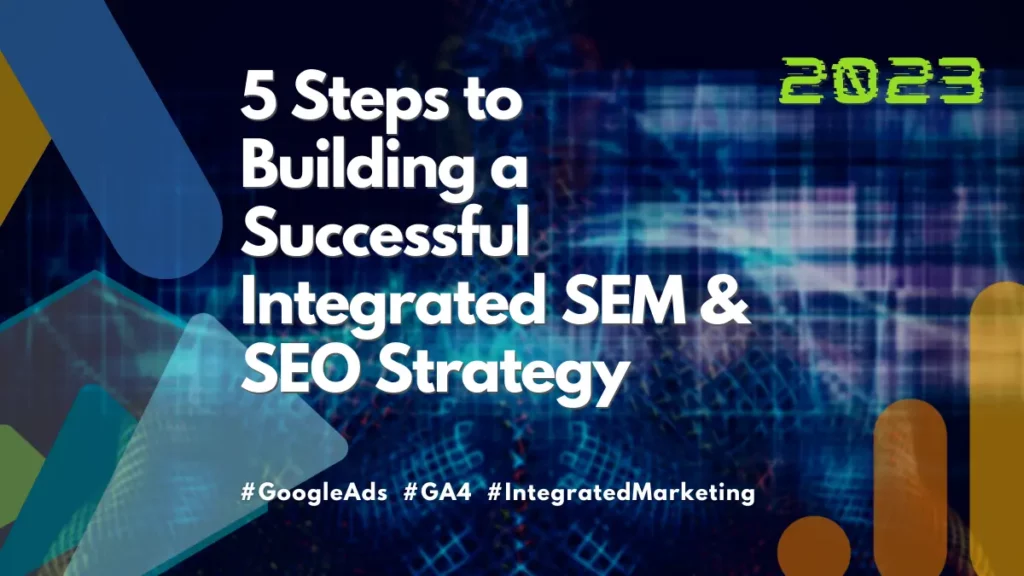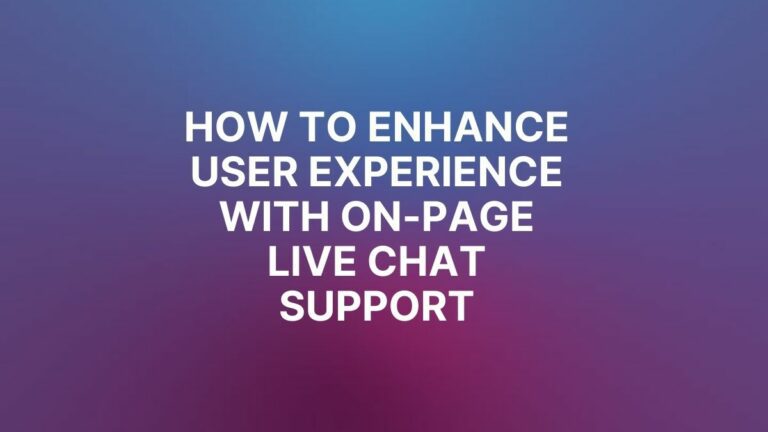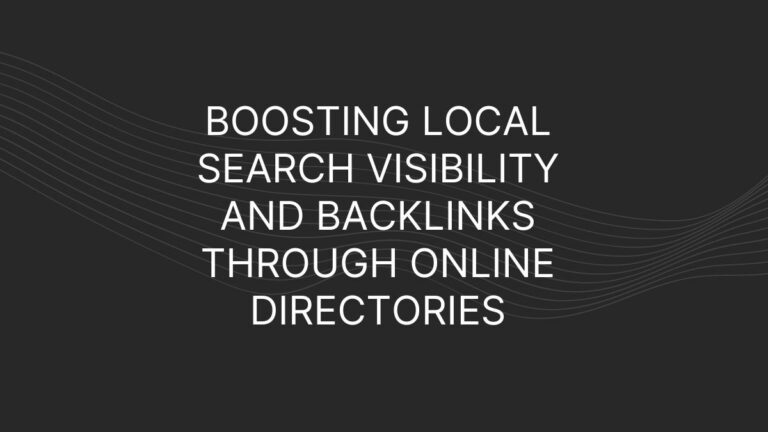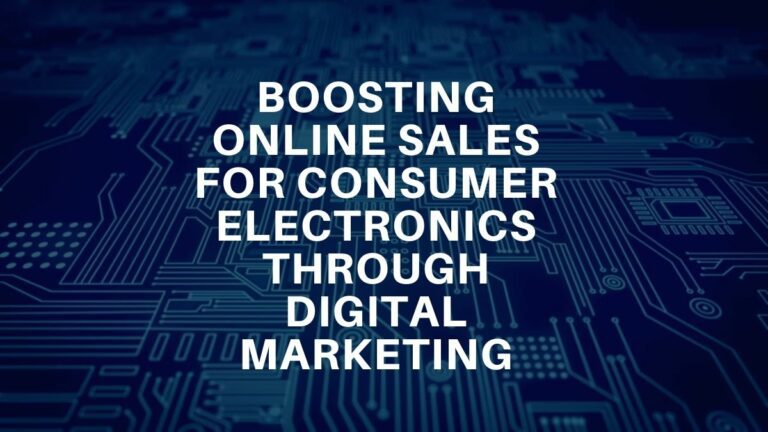
5 Steps to Building a Successful Integrated SEM and SEO Strategy
Everyone must find new ways to reach their target audiences in today’s business environment. However, knowing where to invest your time and money can be challenging with so many online marketing channels. One approach that has been gaining popularity in recent years is an integrated SEM and SEO strategy. By combining the power of search engine marketing (SEM) and search engine optimization (SEO), businesses can maximize their online presence and drive more traffic and conversions to their website.
We will share five steps to building a successful integrated SEM & SEO strategy. Whether you are a small business owner or a marketing professional, these steps will help you get the most out of your online marketing efforts.
Step 1: Define Your Goals, KPIs, and Target Audience
The first step in building an integrated SEM and SEO strategy is to define your goals, KPIs, and target audience. This is essential because it sets the foundation for everything else you’ll do in your online marketing campaigns.
When defining your goals, you must focus on what you want to achieve with your SEM & SEO efforts. For example, do you want to generate more leads, increase website traffic, or improve conversions? Understanding your goals will help you focus your efforts and measure your success.
Once you’ve defined your goals, the next step is identifying your target audience. You are trying to reach these people with your online marketing campaigns. What are their interests, pain points, and search behaviors? Understanding your audience will help you tailor your messaging and optimize your online content to better connect with them.
In this step, PPC (pay-per-click) advertising can be beneficial. You can target specific keywords and demographics with PPC to reach your ideal audience. By running PPC campaigns alongside your SEO efforts, you can get a complete picture of your target audience and optimize your online marketing accordingly.

Step 2: Conduct Keyword Research

Conduct keyword research is the second step in building an integrated SEM & SEO strategy. This involves identifying the keywords and phrases your target audience is searching for online. Then, optimizing your online content for these keywords can improve your visibility in search engine results pages (SERPs) and attract more traffic to your website.
When conducting keyword research, it’s important to differentiate between SEM and SEO keywords. SEM keywords are typically more transactional and focused on direct conversions, while SEO keywords are more informational and aimed at driving organic traffic to your website. Therefore, you can create a more well-rounded online marketing strategy by identifying both SEM and SEO keywords.
One effective way to conduct keyword research is to use keyword research tools like Google Keyword Planner, Ahrefs, or SEMrush. These tools can help you identify relevant keywords, estimate search volumes, and analyze keyword difficulty. Using these tools to research your target audience’s search behaviors, you can optimize your online content to meet their needs better.
In this step, PPC can also be helpful. You can test their effectiveness by running PPC campaigns using your target keywords and refine your SEO strategy accordingly.
Step 3: Develop a Content Strategy
Developing a content strategy is the third step in building an integrated SEM and SEO strategy. This involves creating and optimizing online content that appeals to your target audience and aligns with your goals.
When developing a content strategy, focusing on quality over quantity is important. Rather than churning out a high volume of low-quality content, aim to create in-depth, informative pieces that provide value to your audience. This will help you rank better in search engine results and establish your business as a thought leader in your industry.
To develop a content strategy that aligns with your SEM & SEO goals, start by identifying the types of content that resonate with your target audience. Are they looking for blog posts, how-to guides, videos, or infographics? Once you’ve identified the best content types, you can create a content calendar that outlines your topics, keywords, and publishing schedule.

When optimizing your online content for SEO, it’s important to focus on both on-page and off-page SEO factors. On-page factors include keyword usage, meta descriptions, and internal linking, while off-page factors include backlinks and social media shares. Optimizing your online content for both on-page and off-page factors can improve your rankings in search engine results and drive more traffic to your website.
In this step, PPC can also be helpful. By running PPC campaigns that promote your online content, you can attract more traffic to your website and test the effectiveness of your content strategy.
Step 4: Optimize Your Website
Optimizing your website is the fourth step in building an integrated SEM & SEO strategy. This involves making technical and design changes to your website to improve its performance and user experience.
When optimizing your website for SEO, it’s essential to focus on factors like page speed, mobile responsiveness, and site architecture. By making these technical changes, you can improve your website’s visibility in search engine results while providing visitors with a better user experience.
To optimize your website for search engine marketing (SEM), focus on landing page design and conversion rate optimization (CRO). By creating effective landing pages and optimizing them for conversions, you can improve the ROI of your PPC campaigns—meaning more revenue for business!

In addition, PPC campaigns can help you determine what landing pages work best for your business. In this step, it’s a good idea to test different designs and messaging to find the most effective CRO strategies possible.
Step 5: Monitor, Analyze, and Adjust Your Strategy

The final step in building an integrated SEM & SEO strategy is to monitor, analyze, and adjust your strategy over time. This involves tracking your key performance indicators (KPIs) and making data-driven decisions about improving your online marketing campaigns.
When monitoring your SEM & SEO strategy, tracking metrics like website traffic, conversion rates, and keyword rankings is essential. By analyzing these metrics, you can identify areas where your strategy is working well and areas where it needs improvement.
Once you’ve analyzed your data, adjusting your SEM & SEO strategy is important. This could involve tweaking your keyword targeting, refining your content strategy, or testing new landing page designs. You can optimize your online marketing campaigns for maximum effectiveness by continuously monitoring and adjusting your strategy.
As with other steps, PPC can also be helpful. By monitoring the performance of your PPC campaigns and adjusting your targeting and messaging accordingly, you can improve the ROI of your SEM & SEO strategy and drive more revenue for your business.
Integrated Digital Marketing Wrapup
In today’s competitive online landscape, an integrated SEM & SEO strategy is essential for businesses that want to maximize their online presence and drive more traffic and conversions to their website. Following the five steps outlined in this article, you can build a successful integrated SEM & SEO strategy that helps you achieve your online marketing goals.
Remember to define your goals and target audience, conduct keyword research, develop a content strategy, optimize your website, and monitor, analyze, and adjust your strategy over time. By taking a holistic approach to your online marketing campaigns and leveraging the power of PPC, SEM, SEO, and integrated marketing, you can stay ahead of the curve and drive more success for your business.

Make Digital Results Your Google Partner Agency
Working with the right partner can be of critical importance. A good “Google Partner” agency, like Digital Results, can help you determine the most effective ways to utilize Google Ads to meet your specific business goals. However, we believe that, first and foremost, we have your best interests at heart—because your success equals our success.
The advantage of working with a Google Partner agency like Digital Results is that we can take care of your SEO and PPC marketing, giving you more room to focus on the parts of your business you love the most.






